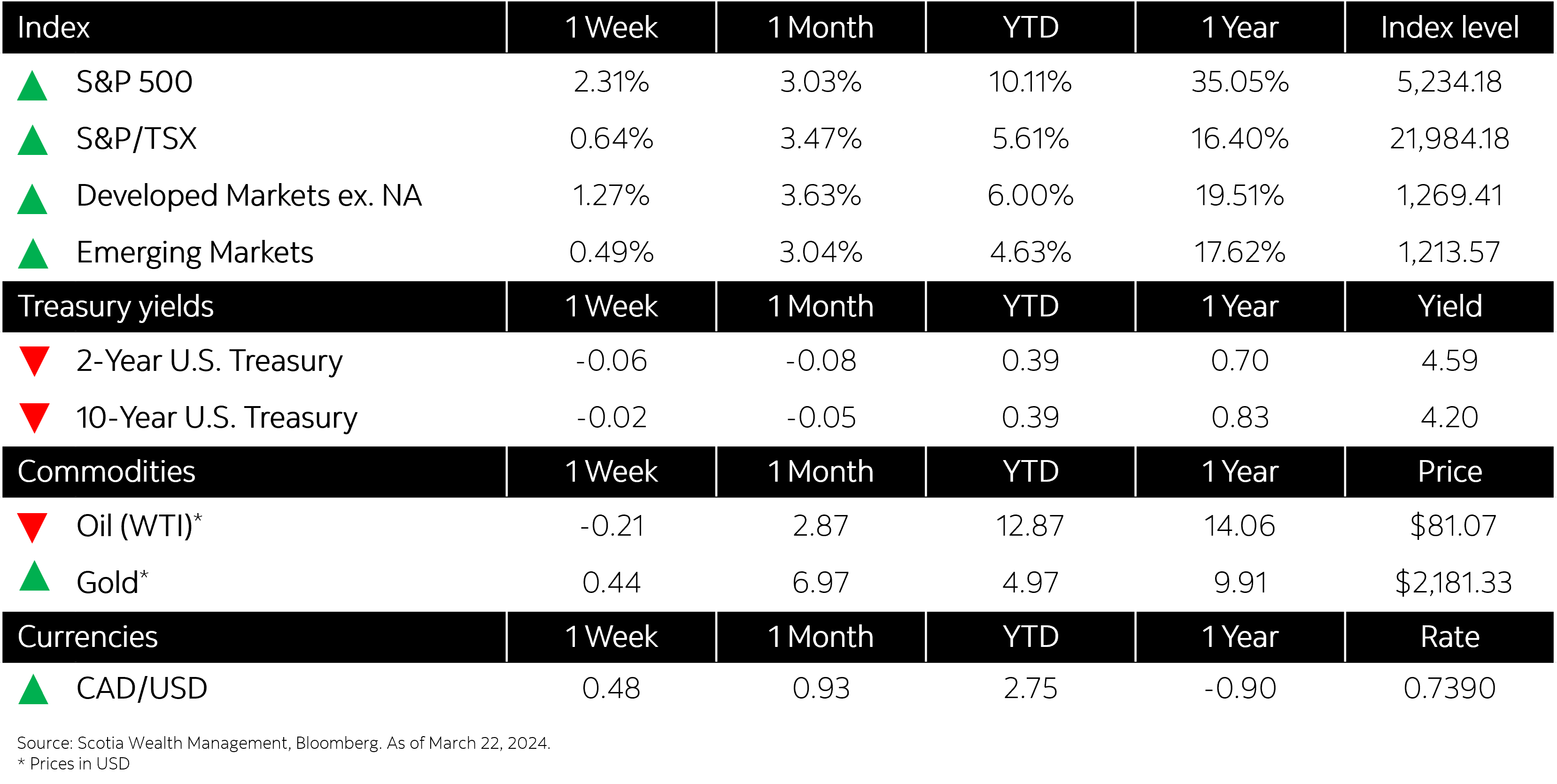
Market Watch: March 22
Week in review
Equity markets rally on central banks’ moves
Equity markets applauded the U.S. Federal Reserve’s (Fed) policy rate decision, economic projections, and Fed Chair Jerome Powell’s press conference. Despite a minor decline on Friday, major global indices closed with strong weekly gains. In the absence of economic data, all eyes were on the remarks from central banks around the globe. On Thursday, an unexpected rate reduction by Switzerland’s central bank helped push markets upwards as investors realized that central banks may not necessarily await the Fed’s rate cuts to implement their own.
Highlights:



